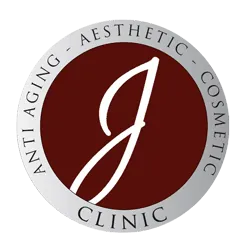In the expansive realm of cosmetic enhancements, the pursuit of youthful, radiant skin remains a top priority for individuals of all ages. As the years pass, the emergence of fine lines, wrinkles, and facial volume loss can gradually erode one’s confidence and self-esteem. Fortunately, advancements in aesthetic medicine have ushered in an era of innovative treatments aimed at rejuvenating the skin and restoring a more youthful appearance. Among the plethora of options available, two stand out as leading contenders: Botox and dermal fillers. These injectable treatments have garnered widespread popularity for their ability to smooth wrinkles, enhance facial contours, and turn back the hands of time. In this comprehensive exploration, we will delve deep into the intricacies of Botox and dermal fillers, dissecting their mechanisms of action, applications, longevity, and considerations, to equip you with the knowledge needed to make informed decisions about your aesthetic journey.
Understanding Botox: The Neurotoxin Marvel
Botox, a derivative of the bacterium Clostridium botulinum, has revolutionized the field of cosmetic medicine since its introduction for aesthetic use. This neurotoxin exerts its magic by selectively targeting the muscles responsible for causing wrinkles and fine lines. By temporarily blocking nerve signals to these muscles, Botox effectively inhibits muscle contractions, thereby softening dynamic wrinkles—a term used to describe wrinkles formed by repetitive facial movements. Areas commonly treated with Botox include the forehead, glabella (between the eyebrows), and the delicate skin around the eyes, known as crow’s feet.
Delving Into Dermal Fillers: Restoring Volume and Youthful Contours
In contrast to Botox, dermal fillers operate on a different principle, aiming to restore volume, contour, and lift to specific areas of the face. These injectable substances, available in various formulations, work by filling in wrinkles and lines, replenishing lost volume, and enhancing facial features. Unlike Botox, which primarily targets muscle activity, dermal fillers are particularly effective for treating static wrinkles—those visible even when the face is at rest. Additionally, dermal fillers can be used to augment lips, fill in nasolabial folds (smile lines), and rejuvenate sunken cheeks, among other applications.
A Comparative Analysis: Key Differences Unveiled
Mechanism of Action
Botox: Temporarily paralyzes muscles to reduce the appearance of wrinkles caused by facial movements.
Dermal Fillers: Add volume beneath the skin’s surface to fill in wrinkles and restore youthful contours.
Types of Wrinkles Treated
Botox: Most effective for dynamic wrinkles, such as forehead lines and crow’s feet.
Dermal Fillers: Ideal for static wrinkles and restoring volume in areas affected by aging.
Duration of Results
Botox: Results typically last 3-4 months, necessitating repeat treatments for maintenance.
Dermal Fillers: Results can last anywhere from 6 months to 2 years, depending on the type of filler and treatment area.
Treatment Areas
Botox: Commonly used for wrinkles in the upper face, including the forehead, glabella, and crow’s feet.
Dermal Fillers: Versatile in addressing wrinkles and adding volume to various facial areas, including lips, cheeks, and nasolabial folds.
Choosing the Right Treatment: Factors to Consider
When contemplating Botox or dermal fillers for wrinkle treatment, several factors warrant consideration:
Type of Wrinkles: Assess whether your wrinkles are primarily dynamic or static.
Desired Outcomes: Determine your aesthetic goals and expectations for treatment.
Longevity: Consider the duration of results and your willingness to undergo repeat treatments.
Treatment Areas: Identify specific areas of concern that you wish to address.
Customized Treatment Plans: Consultation Is Key
To determine the most suitable treatment option tailored to your individual needs, scheduling a consultation with a qualified injector or dermatologist is imperative. During this consultation, your provider will conduct a thorough assessment of your facial anatomy, discuss your aesthetic aspirations, and recommend a personalized treatment plan designed to achieve optimal results while mitigating potential risks.
Conclusion
In conclusion, Botox and dermal fillers represent two formidable contenders in the realm of wrinkle treatment, each offering distinct benefits and outcomes. While Botox targets muscle activity to smooth dynamic wrinkles, dermal fillers restore volume and fill in static wrinkles, rejuvenating youthful contours and enhancing facial features. By comprehensively understanding the differences between these popular treatments and considering factors such as mechanism of action, types of wrinkles treated, duration of results, and treatment areas, you can embark on your aesthetic journey with confidence and clarity. Consult with a knowledgeable practitioner to explore your options, and together, let us embark on the path to smoother, younger-looking skin and renewed self-assurance.


